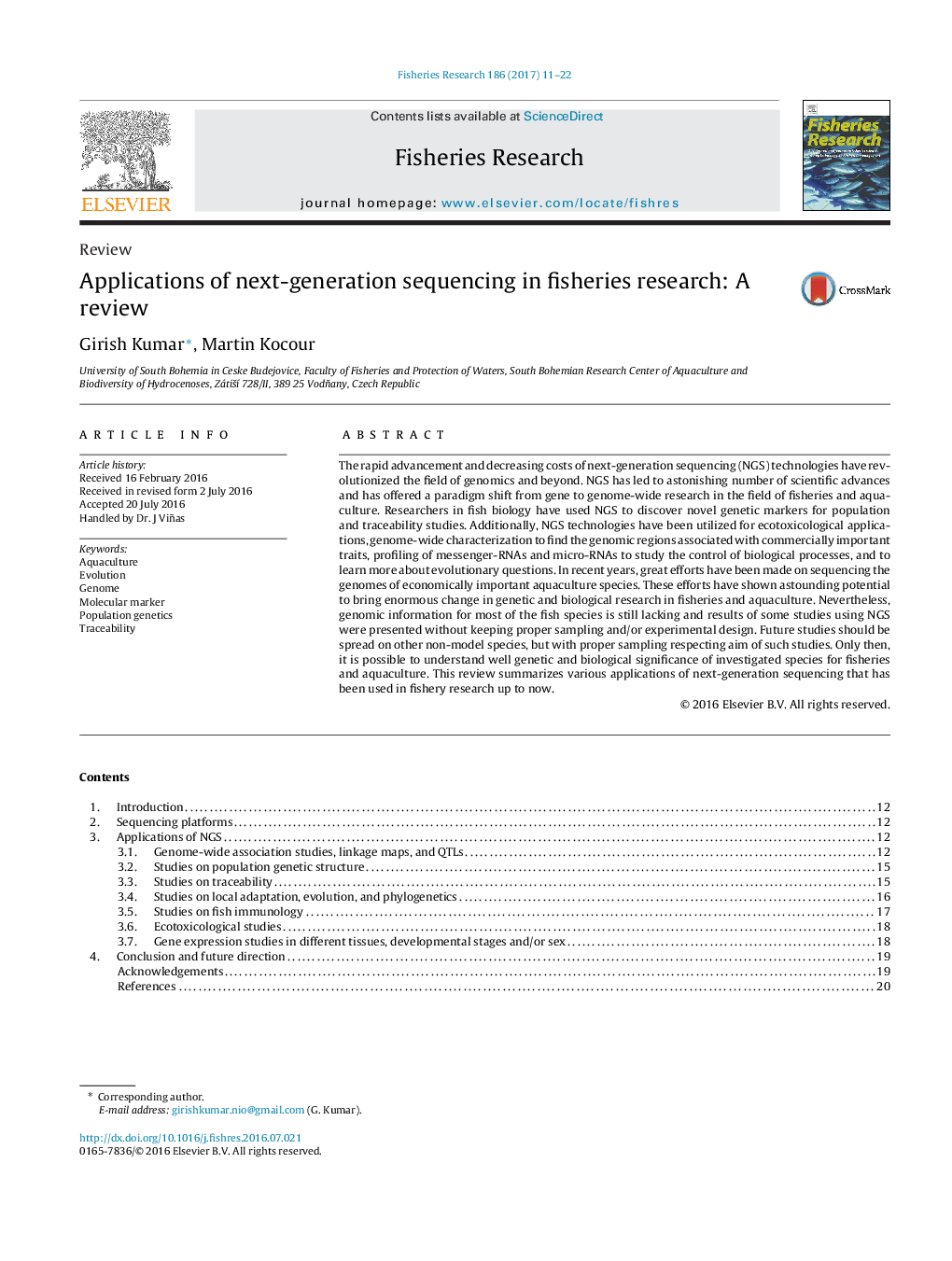| Article ID | Journal | Published Year | Pages | File Type |
|---|---|---|---|---|
| 4542596 | Fisheries Research | 2017 | 12 Pages |
•NGS technologies are useful for genome-wide detection and characterization of molecular markers.•NGS technologies are important tool to study gene expression profiling in fish species.•NGS is used to identify the genes associated with performance and production traits in fish species.•NGS is used to evaluate the population genetic structure and effects of stocking on the genetic integrity of natural populations.•NGS data help to resolve phylogenetic challenges, particularly among closely related species.
The rapid advancement and decreasing costs of next-generation sequencing (NGS) technologies have revolutionized the field of genomics and beyond. NGS has led to astonishing number of scientific advances and has offered a paradigm shift from gene to genome-wide research in the field of fisheries and aquaculture. Researchers in fish biology have used NGS to discover novel genetic markers for population and traceability studies. Additionally, NGS technologies have been utilized for ecotoxicological applications, genome-wide characterization to find the genomic regions associated with commercially important traits, profiling of messenger-RNAs and micro-RNAs to study the control of biological processes, and to learn more about evolutionary questions. In recent years, great efforts have been made on sequencing the genomes of economically important aquaculture species. These efforts have shown astounding potential to bring enormous change in genetic and biological research in fisheries and aquaculture. Nevertheless, genomic information for most of the fish species is still lacking and results of some studies using NGS were presented without keeping proper sampling and/or experimental design. Future studies should be spread on other non-model species, but with proper sampling respecting aim of such studies. Only then, it is possible to understand well genetic and biological significance of investigated species for fisheries and aquaculture. This review summarizes various applications of next-generation sequencing that has been used in fishery research up to now.
